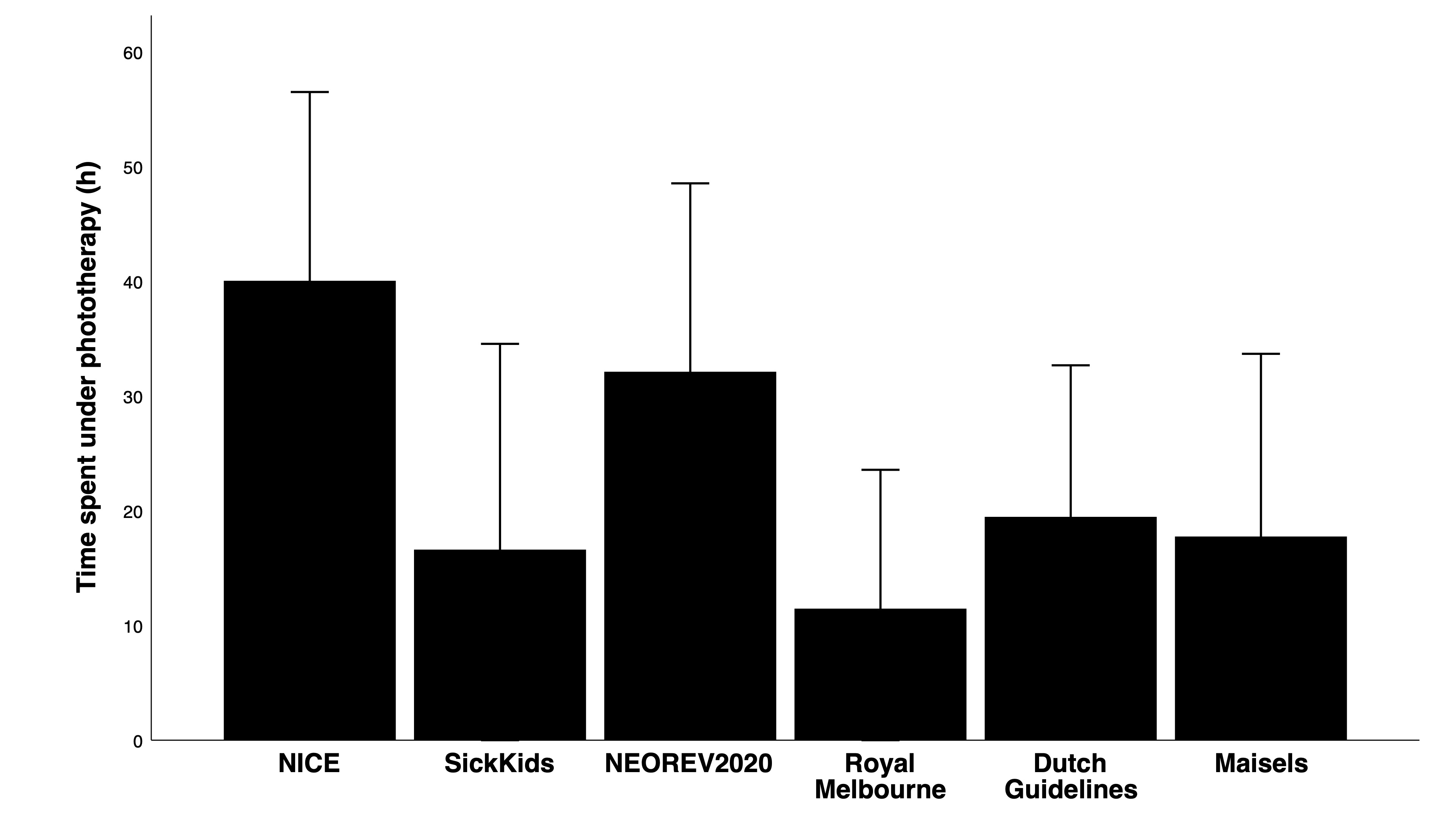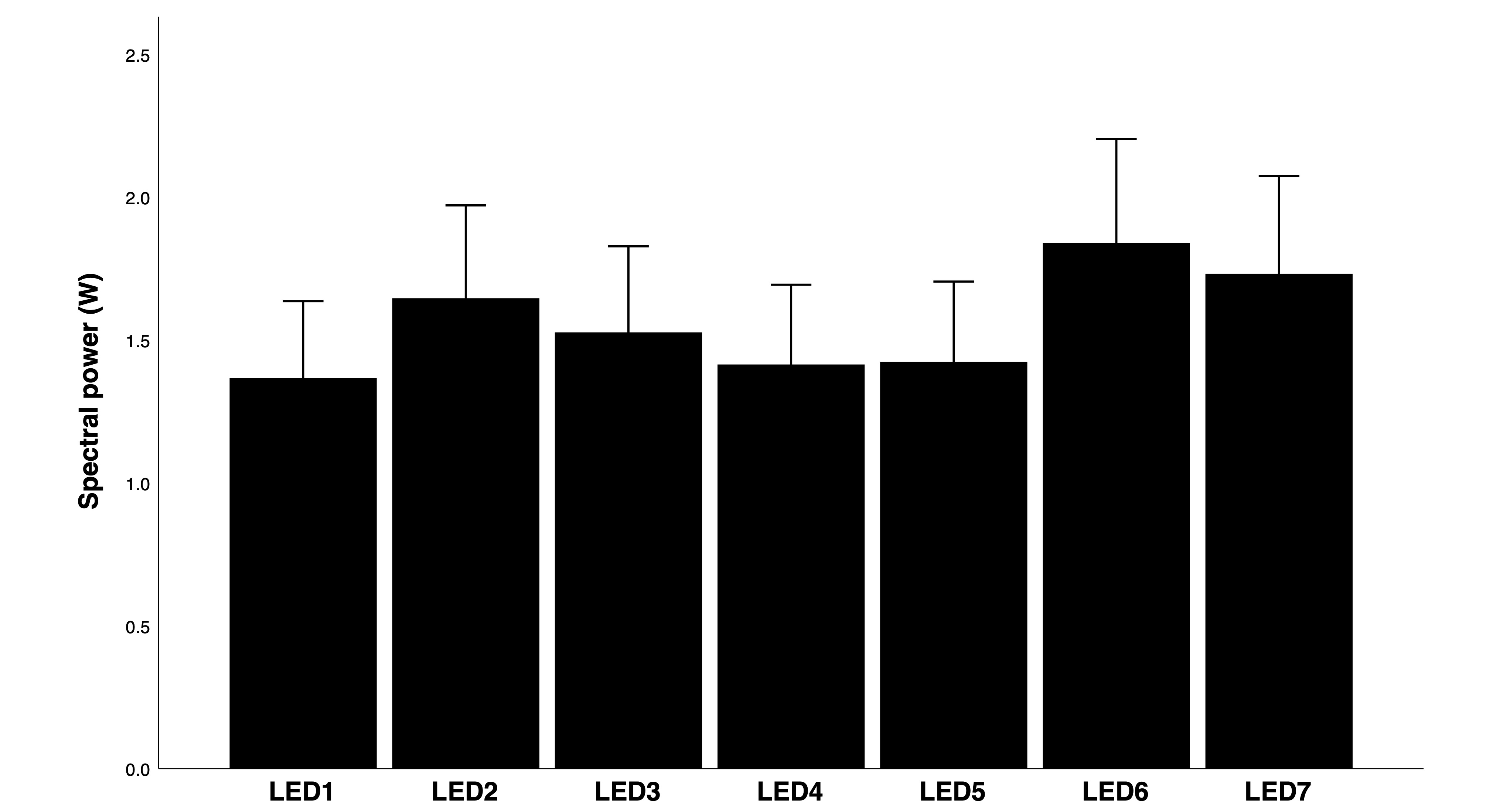Neonatal Hematology & Bilirubin Metabolism 1
Session: Neonatal Hematology & Bilirubin Metabolism 1
666 - Variation of cumulative light exposure of extremely preterm neonates subjected to phototherapy using different schedules and devices
Monday, April 28, 2025
7:00am - 9:15am HST
Publication Number: 666.7032
Daniele De Luca, APHP - Paris Saclay University, Paris, Ile-de-France, France; Costanza R. Neri, APHP Paris-Saclay University, Paris, Ile-de-France, France; Vanessa Monin, APHP-Paris Saclay University, Paris, Ile-de-France, France

Daniele De Luca, n/a (he/him/his)
Full Professor of Neonatology
APHP Paris Saclay University
Paris, Ile-de-France, United States
Presenting Author(s)
Background: Phototherapy is an instrumental therapy but its safety for extremely preterm babies is questioned. The cumulative light dose usually received by this population is unknown.
Objective: To verify the light exposure of extremely preterm babies treated using various phototherapy guidelines and phototherapy devices, in terms of therapy duration and spectral power.
Design/Methods: Cross-sectional study performed in an academic referral NICU. Neonates 30 weeks’ gestations have been recruited if they needed phototherapy as per UK NICE thresholds. TSB was measured daily in capillary samples by point-of-care blood gas analyzers. During the first week, phototherapy was restarted if, after the end of treatment, TSB went beyond the daily threshold again. Therapy was provided using LED devices (regularly checked by the hospital engineering) for 24h-cycles. The actual therapy duration was recorded and we simulated the duration if other schedules (published or available online) were applied. Absolute irradiance of all LED devices in use in our NICU was measured. Measurements were done considering the Vreman’s homunculus and values measured at different levels of the homunculus were averaged to obtain a mean irradiance. Spectral power was estimated multiplying the mean irradiance for the body surface area of each enrolled neonate.
Results: 42 neonates were recruited (GA: 28 (1.8) weeks, BW: 1071 (362) gr, exposed body surface area: 510 (101) cm2). The mean exposure time significantly varies depending on the treatment schedule applied from 17.7 (16)h to 40 (16.4)h (RM-ANOVA p< 0.001, Fig.1). Absolute irradiance of LED devices varies from 2.7 to 3.6 mW/cm2. Consequently, babies may be treated with a spectral power ranging from 1.36 (0.27) to 1.84 (0.36) W depending on the used device (RM-ANOVA p< 0.001, Fig.2).
Conclusion(s): Light exposure in extremely preterm infants needing phototherapy significantly varies in terms of spectral power and duration of therapy.
Mean duration of light exposure in extremely preterm infants treated according to various phototherapy guidelines
 Bar and T-bars represent means and standard deviations, respectively. Guidelines are as follows: NICE: UK national institute for clinical excellence; SickKids: Neonatal Intensive Care Units - The Hospital for Sick Children, Toronto-ON, Canada; NEOREV2020: Indian guidelines published in Pillai A. Neoreview 2020; Royal Melbourne: Royal Children Hospital, Melbourne, Australia); Dutch: Dutch guidelines published in van Imhoff. Early Hum Dev 2011; Maisels: Maisels' suggestions published in J Perinatal 2012.
Bar and T-bars represent means and standard deviations, respectively. Guidelines are as follows: NICE: UK national institute for clinical excellence; SickKids: Neonatal Intensive Care Units - The Hospital for Sick Children, Toronto-ON, Canada; NEOREV2020: Indian guidelines published in Pillai A. Neoreview 2020; Royal Melbourne: Royal Children Hospital, Melbourne, Australia); Dutch: Dutch guidelines published in van Imhoff. Early Hum Dev 2011; Maisels: Maisels' suggestions published in J Perinatal 2012.Mean spectral power in extremely preterm infants treated with various LED devices
 Bar and T-bars represent means and standard deviations, respectively. Spectral power has been estimated calculating the exposed body surface area (see Ann Y. Acta Paediatrica 2007)
Bar and T-bars represent means and standard deviations, respectively. Spectral power has been estimated calculating the exposed body surface area (see Ann Y. Acta Paediatrica 2007)Mean duration of light exposure in extremely preterm infants treated according to various phototherapy guidelines
 Bar and T-bars represent means and standard deviations, respectively. Guidelines are as follows: NICE: UK national institute for clinical excellence; SickKids: Neonatal Intensive Care Units - The Hospital for Sick Children, Toronto-ON, Canada; NEOREV2020: Indian guidelines published in Pillai A. Neoreview 2020; Royal Melbourne: Royal Children Hospital, Melbourne, Australia); Dutch: Dutch guidelines published in van Imhoff. Early Hum Dev 2011; Maisels: Maisels' suggestions published in J Perinatal 2012.
Bar and T-bars represent means and standard deviations, respectively. Guidelines are as follows: NICE: UK national institute for clinical excellence; SickKids: Neonatal Intensive Care Units - The Hospital for Sick Children, Toronto-ON, Canada; NEOREV2020: Indian guidelines published in Pillai A. Neoreview 2020; Royal Melbourne: Royal Children Hospital, Melbourne, Australia); Dutch: Dutch guidelines published in van Imhoff. Early Hum Dev 2011; Maisels: Maisels' suggestions published in J Perinatal 2012.Mean spectral power in extremely preterm infants treated with various LED devices
 Bar and T-bars represent means and standard deviations, respectively. Spectral power has been estimated calculating the exposed body surface area (see Ann Y. Acta Paediatrica 2007)
Bar and T-bars represent means and standard deviations, respectively. Spectral power has been estimated calculating the exposed body surface area (see Ann Y. Acta Paediatrica 2007)
